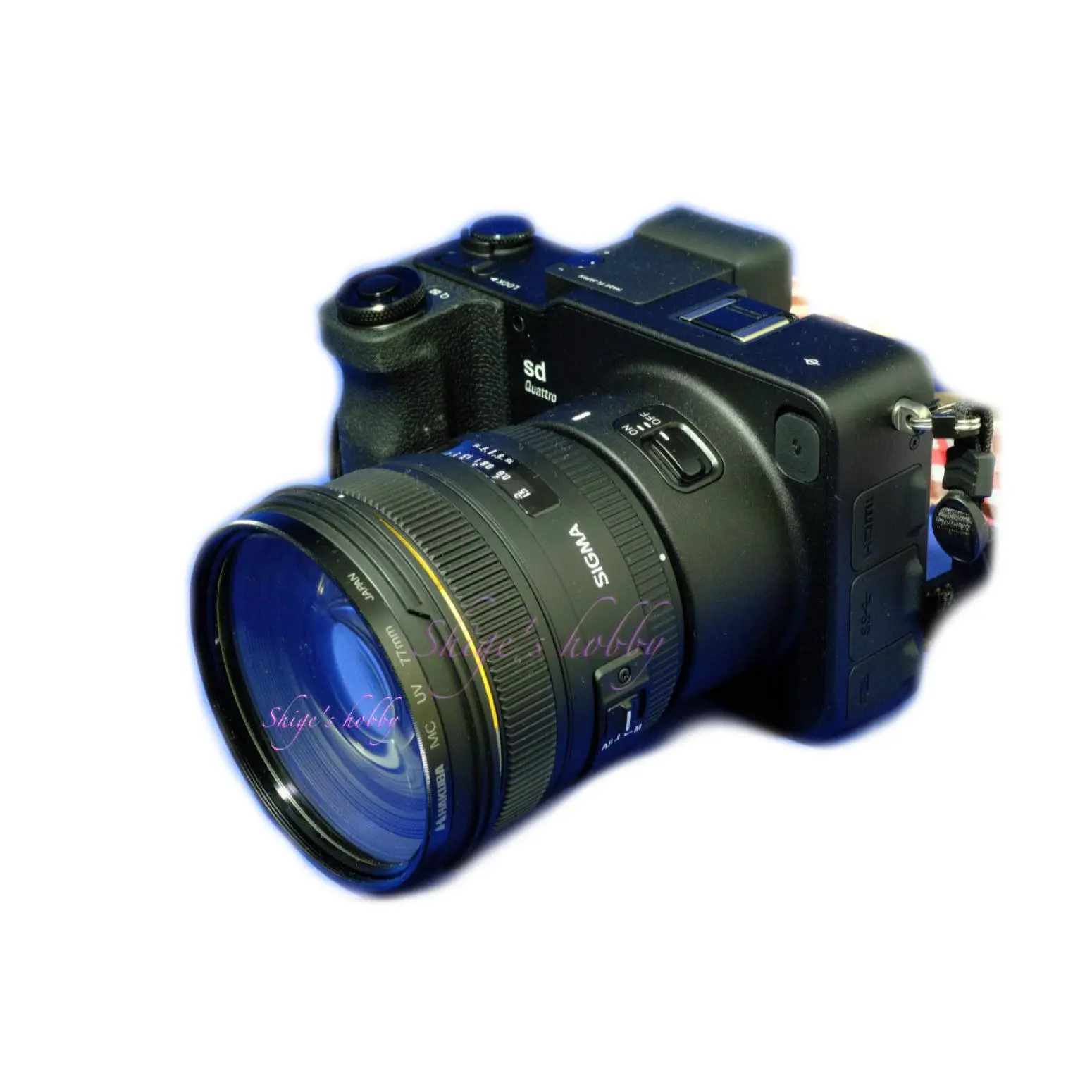Change for mirrorless camera: sd Quattro

A review and sample photos of the Sigma sd Quattro / Quattro H, a camera equipped with an original, latest triple-layer sensor
- Please see the disclaimer regarding advertising here.
- Italicized links in the text are advertisement links that take you to other sites.
Table of contents

Gallery
The following lenses were used to take the example photos:
- SIGMA 14-24mm F2.8 DG HSM | Art 018 +sd Quattro H
- SIGMA APO 70-200mm F2.8 EX DG OS HSM +sd Quattro H
- SIGMA 50mm F1.4 EX DG HSM +sd Quattro
Review


1.Overview
The sd Quattro was a mirrorless digital camera released in July 2016, followed six months later in December 2016 by the sd Quattro H.
Releasing roughly four years after the SD1/SD1 Merrill, some might have thought Sigma had given up on camera bodies, but that wasn’t the case. The interchangeable-lens Quattro series abandoned the SLR format in favor of an EVF and became a mirrorless camera while still using the Sigma SA mount.
The body design is squarer due to the elimination of the mirror, but the Sigma SA mount has a long flange focal distance, resulting in a chimney-like tube extending from the body. The EVF, which also seems like an afterthought, offers sufficient specs: 2.36 million dots, 100% field of view, and approximately 0.96x magnification (50mm F1.4, infinity, -1m-1).
Due to the power consumed by the sensor and LCD screen, a single battery in standard mode quickly runs out, so a battery grip that can accommodate two batteries was provided as a solution. When viewed from the front, the notch on the bottom left of the body is filled with the battery grip, creating a huge, square camera. When Sigma’s prized Art lens is attached to this body, its size is further exaggerated, requiring a Billingham 335-class bag to carry the camera.
There are two types of fourth-generation Foveon sensors: an APS-C-sized sensor with a triple-layer structure of 20+5+5 megapixels (equivalent to 1.5x the 35mm equivalent) used in the integrated lens cameras dp Quattro and sd Quattro; and an APS-H-sized sensor with a triple-layer structure of 25.5+6.4+6.4 megapixels (equivalent to 1.3x the 35mm equivalent) used in the sd Quattro H (equivalent to 1.5x the 35mm equivalent).
The sd Quattro has a shooting resolution of 20 megapixels, while the sd Quattro H has a shooting resolution of 25.5 megapixels, which is the number of pixels at the top of the sensor.
2.Usability
The sd Quattro series is equipped with a mysterious sensor that’s more difficult to manufacture than the SD1’s. In an interview with the developer, I noted that 19.6-megapixel x 3 sensors require heavy image processing, but the software development burden doesn’t seem to change significantly with this unusual sensor, as many aspects of image processing differ from previous models. The sd Quattro-H scales up the sd Quattro’s sensor size to APS-H, with 25.5 megapixels at the top and 6.4 megapixels at the bottom.
The crisp, high-resolution images captured are truly impressive, and the results are still highly acceptable today.
The EVF is satisfactory in terms of specifications, but in actual use, the image lag is severe and tiring, likely due to its low display rate (refresh rate, frame rate). The long blackout period after pressing the shutter button also makes it clearly inferior to the viewfinders of the contemporaries, the Sony α7 series and the Leica SL typ601.
Although I only used it for a short time, I didn’t experience it myself, and it’s unfortunate that there have been rumors about mechanical dust adhering to the sensor.
I think it’s fair to say that the sd Quattro / sd Quattro H are unfinished cameras.
The increased pixels mean longer post-capture processing times, battery life is poor, and continuous shooting will trigger a sensor heat damage warning. Also, although this is a problem on the photographer’s part, if you’re not careful, you’ll be hit with a parade of camera shake, making this a camera that requires even more patience than the already difficult SD1.
I consider myself a SIGMA user who’s used to the grind, but even so, I feel it’s a pretty tough camera.
Currently, the Quattro H camera body is not cheap, so purchasing one requires considerable resolve and expense. Every now and then, when I see a cheap sd Quattro body, I think about getting one again, but I can’t bring myself to do it.
I still have the old SD series cameras on hand, but the Quattro series is still on hold.
When I develop old photos to create this page, I am disappointed to see that the image quality is not bad.
3.Summary
In conclusion, to sum up the sd Quattro / sd Quattro H, the new high-pixel sensor puts a heavy load on the camera, making it difficult to use.
The response is clearly different from other companies’ mirrorless cameras, so this is not a camera for those looking for a comfortable shooting environment, but rather one that should be used by ascetics who are not afraid of the hardships involved.
Specifications, considerations, etc.
X3F files
X3F files store three color information (R, G, B) for each pixel, resulting in three times the data volume of a typical Bayer sensor.
I’ve been using SIGMA PHOTO PRO (SPP), which processes X3F files, since the SD9 days, but I’d complained about its instability and slow performance. However, when I used it on a 2024 Mac mini with an M2 Pro, I rarely experienced any unexpected SPP crashes and realized that the image processing speed was fast enough for practical use. This was a testament to the increased processing speed achieved by the PC’s increased CPU power.
I also tried a freeware utility software to convert X3F to DNG, but the version I used required extensive processing of the converted DNG image to achieve the same quality as SPP, making it difficult to master. It’s unclear whether it has been improved since then.
If the DNG converted image is comparable to the SPP default, the ideal workflow for users familiar with other software would be to fine-tune it using other software, but it wasn’t that easy. Since the conversion software is freeware created by an individual, users have no right to complain.
I found out that the images can be developed using the image processing software Affinity Photo, so I tested it on this page. I know that to achieve the same results as SPP, I would have to carefully research the adjustment methods, but since SPP can now output adjusted images without any stress, I haven’t pursued it too deeply. For now, I think the better workflow is to output JPGs using SPP and then make the final adjustments in Affinity Photo.
As of 2024, development of the new Foveon sensor appears to have stalled. I’m eager to see if I’ll come across any new X3F data in the future.
DNG files
Cameras equipped with the Quattro sensor now allow you to choose between the traditional X3F and DNG formats for raw data.
The DNG data created by the dp Quattro series is 100MB, so writing to media during shooting is slow and consumes more memory card space than the 45MB or so of X3F.
If your environment allows for comfortable SPP use, there’s probably no need to insist on DNG recording.
I thought the large size of DNG data might be due to the fact that it stores both 20-megapixel RGB data after processing and 20-megapixel B (blue), 5-megapixel R (red), and 5-megapixel G (green) data before processing. However, since regular 20-megapixel raw data is around 20MB and pre-processed X3F image data is around 45MB, it still seems a bit too large, even when other additional information is added.
For more information on DNG files, see the website of Adobe Systems, the proponent of the concept.
My thoughts on the sd Quattro and sd Quattro H
When choosing between the sd Quattro and the sd Quattro H, if you’re not looking to acquire the latest lenses in the Sigma SA mount, I don’t recommend the sd Quattro H. Because the sd Quattro H’s larger sensor size requires the lens’s peripherals to be used, older lenses will result in noticeable graininess in the peripheral areas of the image.
Also, the sd Quattro provides sufficient image quality for general use, and if you’re going with the expensive sd Quattro H, pairing it with the latest Art lenses released around the same time will help bring out the camera’s true potential.
The sd Quattro series is now mirrorless, but because it retains the Sigma SA mount, it’s a half-baked camera. It’s strange that Pentax decided to go for this format, given their 2012 attempt to go mirrorless while still using the K-mount with the K-01, which proved a huge sales flop. Ironically, as of 2024, the K-01 is trading at a premium, likely due to its limited production run.
Deciding that it was impossible to develop and release an in-house mirrorless mount in 2016 was probably a wise decision, but once the new sensor was created, Sigma couldn’t help but want to release a camera anyway. This shows the Sigma spirit in staying true to their own desires rather than engaging in the same old marketing tactics.
Of course, this is hindsight, but in 2018, Sigma happily joined Leica’s L-Mount Alliance and obtained a mirrorless mount. I can’t help but think that if they had stuck with the integrated lens-equipped dp Quattro series for the two years from 2016 and then finally released a camera with a Quattro H sensor in 2018, both the manufacturer and users would have been happier.
There may have been a future where the Foveon sensor would allow genuine Leica lenses to be used with autofocus. As the L-Mount Alliance continues, I hope that an L-mount camera with a full-frame Foveon sensor will eventually be released.
As of 2024, Sigma has released an L-mount camera that uses a standard Bayer sensor, has no mechanical shutter, and a compact body, making it more geared towards video than still photography. Again, this is just a model with a higher pixel count, and no follow-ups have been released, so the future of the series is unclear.
The fourth-generation Foveon sensor was released in 2016, and eight years have passed since then. 2024 marks the end of the pixel count race in digital cameras, so it will be very interesting to see whether a new sensor and a camera equipped with it will actually be released.
| Items | SD1 | SD1 Merrill | sd Quattro | sd Quattro H |
| Camera effective pixel count | 48 million pixels (total pixels) 46 million pixels (effective pixels) (4,800×3,200×3 layers) | ← | 33.2 million pixels (total pixels) 29.5 million pixels (effective pixels) | 44.7 million pixels (total pixels) 38.6 million pixels (effective pixels) |
| Image sensor | 3rd generation FOVEON X3® (CMOS) | ← | 4th generation FOVEON X3® (CMOS) | ← |
| Image sensor size | APS-C 23.5×15.7mm | ← | APS-C 23.4mm×15.5mm | APS-H 26.7mm×17.9mm |
| Camera Mount | Sigma SA bayonet mount | ← | ← | ← |
| Back LCD | 3inch, 0.46 million dots | ← | 3inch, 1.62 million dots | ← |
| Finder | Pentaprism single-lens reflex finder | ← | Electronic viewfinder (approximately 2.36 million dots color liquid crystal) | ← |
| Battery | Lithium ion battery (BP-21 / BP-22) | ← | Lithium ion battery (BP-61) | ← |
| Size(mm) W x H x D | 145.5 × 113.5 × 80.0 | ← | 147 x 95.1 x 90.8 | ← |
| Weight(g) | 700g (Exclude battery) | ← | 625g (Exclude battery) | ← |
| Release date | 2011.06. 10 | 2012.03.09 | 2016.7.7 | 2016.12.20 |
| Price(Yen/No-tax) | Open Reference price (700,000 yen) | Open Reference price (200,000 yen) | Open Reference price (81,000 yen) | Open Reference price (126,800 yen) |
Options
- Vertical grip PG-41
- All of SIGMA SA Mount lenses
Reference links
Affiliate links

Update history
- 2025.9.3
Leave a Reply